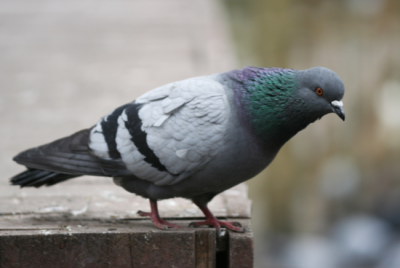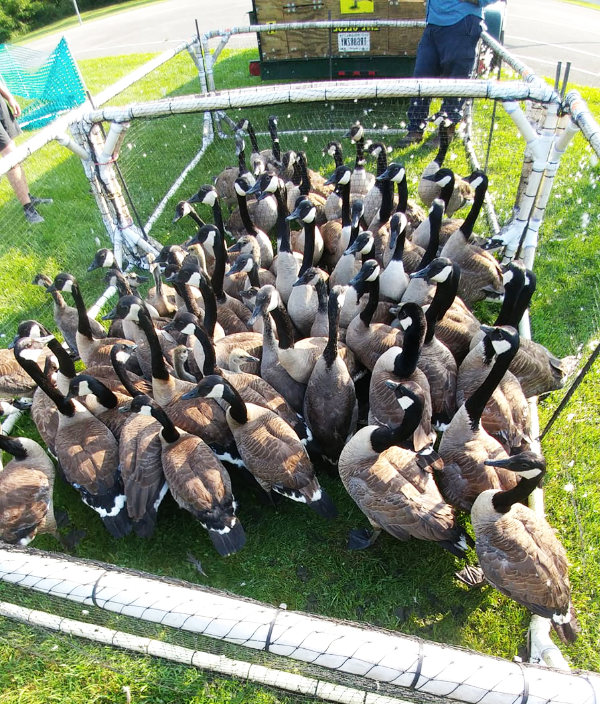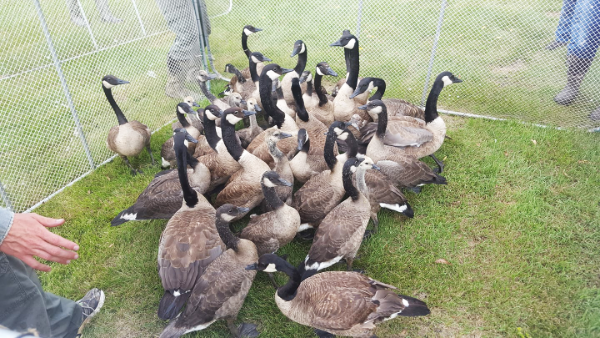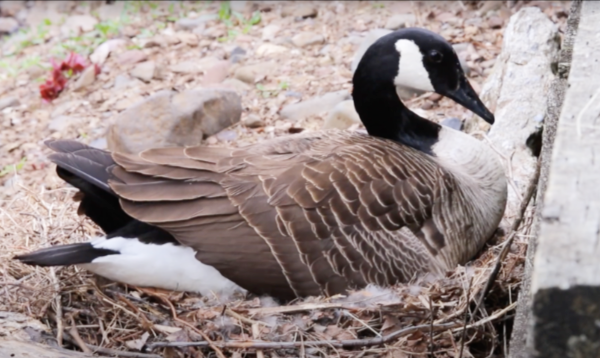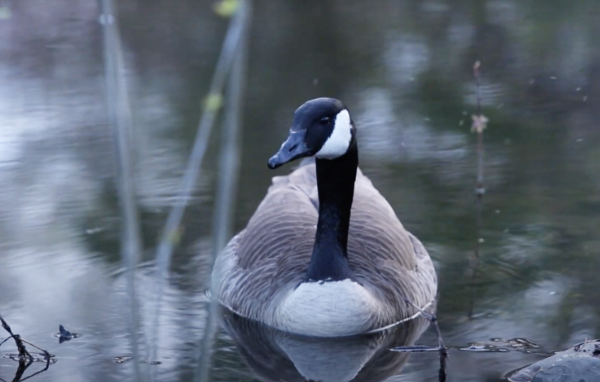Description and Identification
Geese (Canadian Goose)
Canadian geese (Branta canadenis) are the largest of 11 subspecies of geese and are found in all of North America. At a glance, they can be recognized by the unique coloring of their large grey to silvery bodies, black necks and heads, and a white chinstrap that distinguishes them from other birds.
Canada geese have a lifespan of 10-25 years and feed for about 12 hours a day. As migratory birds, they travel in herds and packs, having a V-shaped formation during flight.
It’s amazing how these birds are classed as waterfowls, yet they spend more time on land than in water. Additionally, it may be assumed that these birds, like other water birds, would be insectivorous or fish-eaters. Still, they are predominantly herbivorous and feed on grains and other plants, including grasses.
Appearance
Generally, Canadina Geese are large water birds that have long necks, strong flattened bills, and large webbed feet. They have a black head and neck, white chinstraps and cheeks, a tan breast and a brown back.
Habitat & Diet
Similar to most geese, Canadian Geese are primarily herbivorous that feed on highly digestible grass and plants, including eelgrass and leaves of skunk cabbage. They are often seen in the morning and late afternoon feeding on waste grain areas like wheat, and soybean fields.
During winter and fall, Canadian Geese tend to feed more on berries, seeds and seem to particularly favor blueberries. They feed on wheat fields, though during the winter, this does not cause yield loss. Also, geese feed on aquatic vegetation, which is a survival adaptation that is beneficial to them. With their adapted strong and flattened bills, it is easy for them to access these plants and stay nourished through winter. Since they have no teeth, Canada geese have serrations on their bills that help with the cutting of grasses and plants.
Geese that adapted to urban areas prefer to feed on lawn grasses; this is associated with the easy digestibility of these grasses and their lengths, which are short enough for the geese to see predators and potential dangers from afar.
Behavior
Nesting: The Canadian Goose prefers to build its nest on the ground, preferably a muskrat mound in a site where it can have a clear view of its surroundings in different directions. The female goose does the site selection, nest building, insulation by using some of her feathers like the down feathers that are soft, and the incubation of eggs. Her male partner guards the nest, protecting the family from impending dangers, and scouts for food for the female during this period.
Family ties: Canadian Geese normally pair up for life, but there few records of extra pairing. Goslings stay with their parents for the first year of life. They are taught to feed and learn other behaviors like migration and various calls. After, they leave the nest to pair-up and begin another mating season.
Molting: It’s a normal behavior to molt and replace old and worn feathers with new ones for a new flight season. Waterfowls undergo a complete molt during the second molt and replace all their flight feathers. Canadian Geese undergo this process during summer that takes one month to complete. Non-breeding yearlings such as adults that don’t nest, and adults whose nest have been destroyed, are usually the first to molt. Canadian Geese molt around bodies of water because it enables them to be at walking distance to water, food, drink, and allows them to swim around during their flightless period.
Migration: The Canadian Geese are known for their characteristic V-shaped flight formation and can fly long distances, depending on the subspecies. Larger subspecies don’t migrate but are seen in parks and around water where they feed on grass and depend on humans for food. For smaller subspecies, they migrate south during the fall and return north in the spring because of food requirements.
Mortality: The death rate of adult Canadian Geese is relatively low as they are well adaptable animals, but a variable in young goslings due to many factors including include population density, litter size, and availability of feed.
Vocalization: Canadian Geese can be viewed as noisy, but research has shown that each sound they make is meaningful. There are 13 known calling sounds of Canadian Geese, which can be differentiated into partner sounds, distinct sounds for calling young ones, and social greetings, which are generally heard in the morning and much quieter than other calls. Also, there are celebratory sounds and calls for the presence of food, and warning calls for perceived danger.
A beneficial trait in these birds is that the trachea and syrinx of these geese are well-developed to create distinct sounds.
Hazards Caused by Poop
The fecal waste of the Canadian Goose has become a great threat to human and animal health, as well as an environmental pollutant in the areas where they are found.
Canadian Geese move as a flock and are found in parks, lawns, and recreational centers. Their feces become an eyesore in all these areas, and it can be annoying to always step on feces as you move around. The feces contain loads of pathogens, including the dreaded campylobacter. Since these geese are almost everywhere, they pose a high health risk for domestic birds, other animals, and humans.
It is important to remember that Canadian Geese are waterfowls and love to be around bodies of water. This results in the pollution of water sources because their feces contaminate the water with large amounts of pathogens and cercaria that causes the famous swimmer's itch. Also, the poop of Canadian Geese contains high levels of nitrogen. When the poop is swept by waves and currents into water bodies, it can lead to algal bloom killing aquatic life, plants, animals, and can clog waterways.
Canada geese are interesting animals. They are pretty harmless (aside from their feces), friendly, and very impressionable. These birds are legally hunted as game animals and can be treated by the use of spray vaccines to make cohabiting with other animals and humans safer for both.
